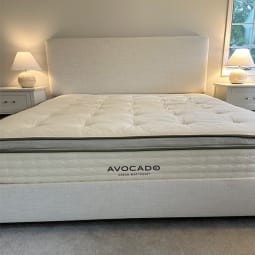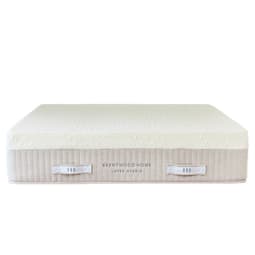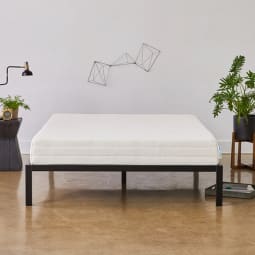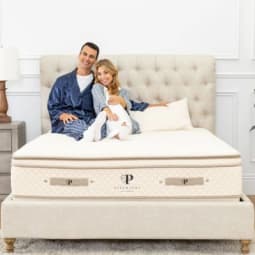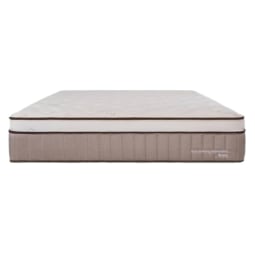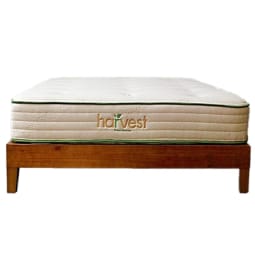We spoke with Charlotte Vallaeys, a Consumer Reports senior policy analyst, and Tasha Stoiber, Ph.D., a senior scientist at the Environmental Working Group, to break down exactly what you need to know about low-toxicity mattresses. These two experts spend their days researching how the materials in our homes impact our health. Below, learn more about materials to look for (and to avoid) in a mattress, which labels you can trust, and which brands are doing it right. Plus, find our picks for the best non-toxic mattresses of 2023. “The majority of mattresses on the market are made from polyurethane foam based on petroleum chemicals, so it can off-gas volatile organic compounds, which can cause respiratory irritation, skin irritation, etc.,” she tells mbg. Though more research still needs to be done, one study found that babies are particularly susceptible to these chemicals, and their cribs may be the source of up to 30 volatile organic compounds (VOCs) that range the gamut from phenols (often used as antiseptics) to formaldehyde (a potential carcinogen found in glues and adhesives). Even if you don’t have a child, it’s probably best to avoid these chemicals where you can, especially with something you use as often as a mattress. These days, the rise of direct-to-consumer models have made natural latex (a historically pricey option) slightly more affordable, but you need to ask a few questions to ensure you’re getting the most bang for your buck. “You have to be careful because some brands might say it’s a latex mattress, but really it is made from synthetic latex. Or, only the top inch is latex and it has polyurethane underneath, so you need to find out the composition of the mattress and know what each layer is made of,” Stoiber cautions. “Some of them address just one thing while others will address everything from the farms that grow the mattress materials to the factories where the mattress is made to the likelihood that a mattress will off-gas once you start using it.” Some of the more comprehensive, holistic labels are Oeko-Tex Standard 100 and Greenguard Gold, which set strict limits on VOCs, flame retardants, and dyes. The winners, though, are the GOTS and GOLS labels, which signify 95-plus% certified organic textiles and latex, respectively. Mattresses with these labels also have a substantial list of banned substances and were made in a way that champions the environment. “GOTS and GOLS were very comprehensive, all the way from the farm to the final product,” Vallaeys says, and Stoiber echoed that the labels holds the most weight. Birch is a New York-based company that sells a variety of mattresses, toppers, and pillows, so you can work with them to personalize your sleep setup. The mattress arrives compressed and rolled up in a box, and the brand recommends waiting one to two hours to let it fully expand. Thanks to the natural materials, there shouldn’t be any off-gassing smells. Avocado is a carbon negative company, which means it voluntarily offsets more than 100% of its emissions. This bed arrives compressed and rolled in a box, but thanks to the natural and organic materials, you don’t need to worry about any weird smells while it expands. It ships in a box via FedEx, or (for an additional fee) you can schedule delivery (within a four-hour window). With this add-on, the brand will send a team to set up your new mattress. As a bonus, the delivery team will even remove your old mattress, along with the foundation and/or box spring (depending on the brand and location). The GOLS-certified Dunlop latex provides a more bouncy and responsive feel than a memory foam mattress. This is a good pick for snorers, because it works with any adjustable base, including the brand’s own models. Each mattress is made to order and then compressed and rolled up in a box to ship. *This bed is currently sold out, but find more options for side sleepers here. The mattress will either be compressed and rolled in a box for free delivery, or you can select a white glove delivery service for a flat fee of $199 per order. With this option, the company will hand-deliver your mattress (but it may still be boxed). The delivery team will also take your old mattress and install the new one in your room for you. Finally, make sure that your mattress has absolutely zero chemical flame retardants. A handful of states are now in the process of banning flame retardants, but until this is the norm, keep an eye out for this unsafe1 (and ineffective) additive.











